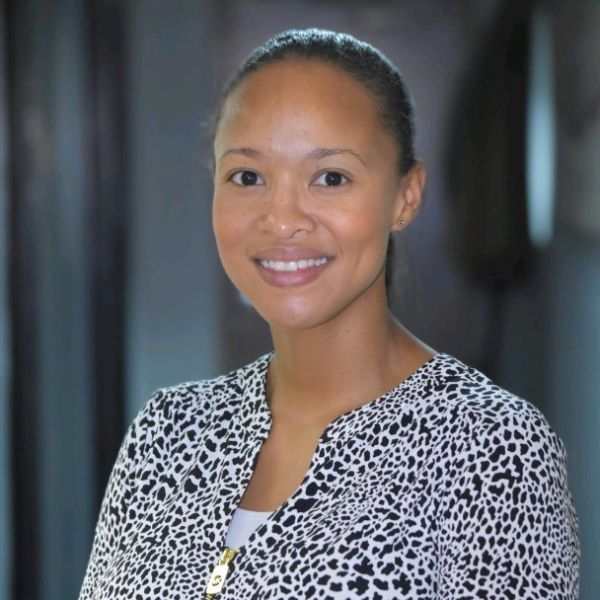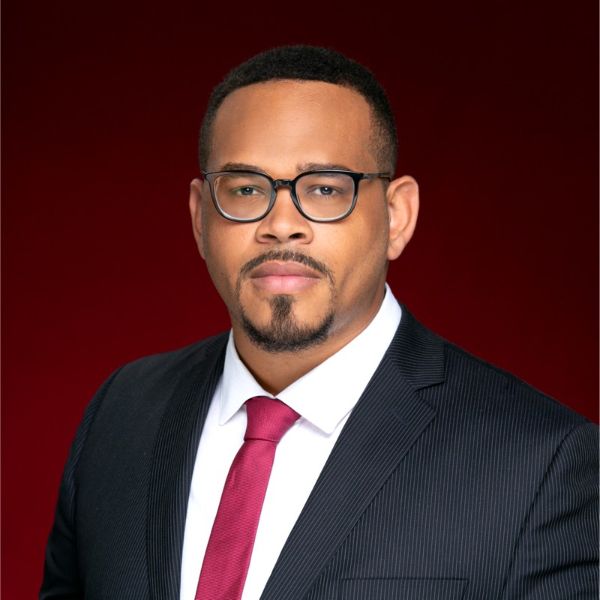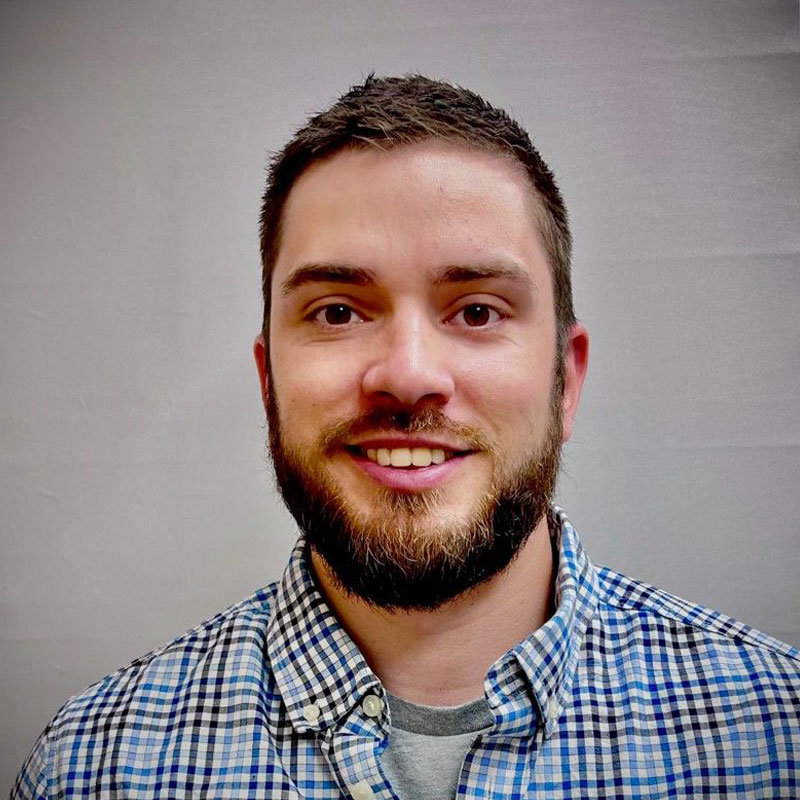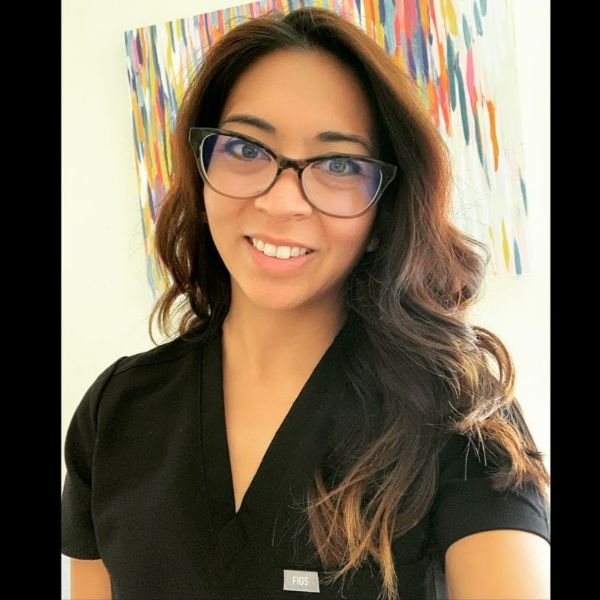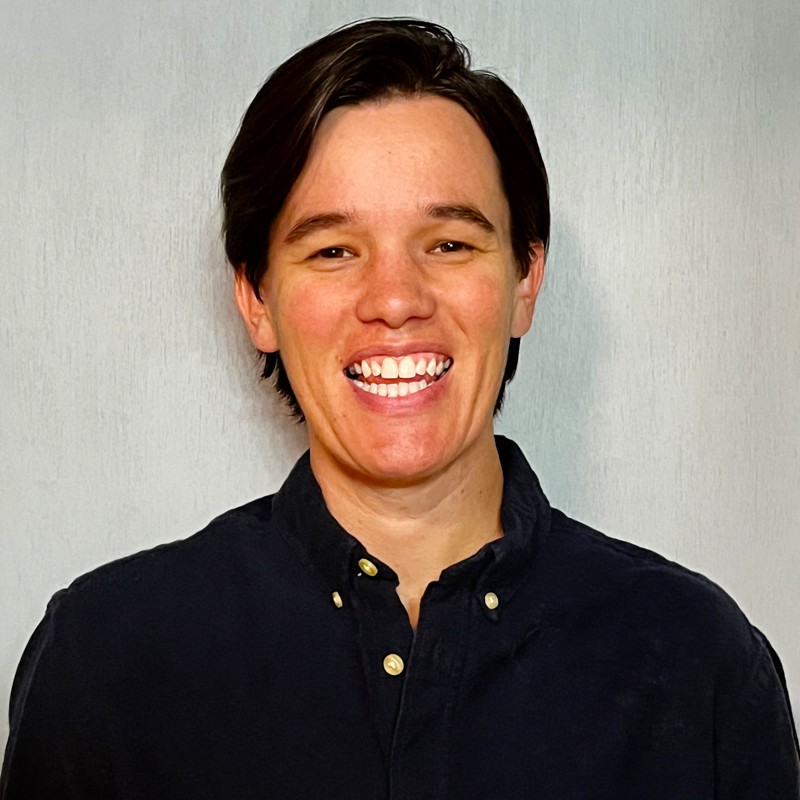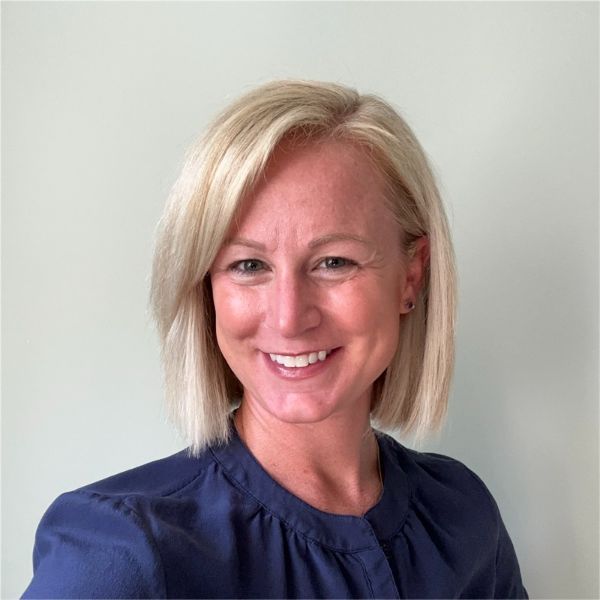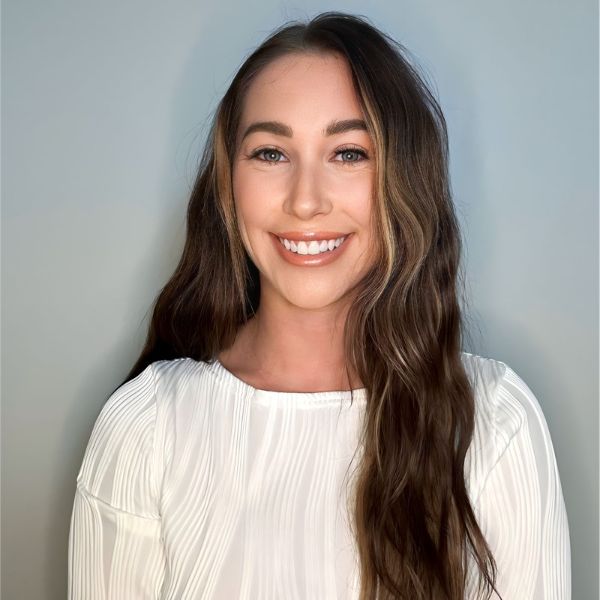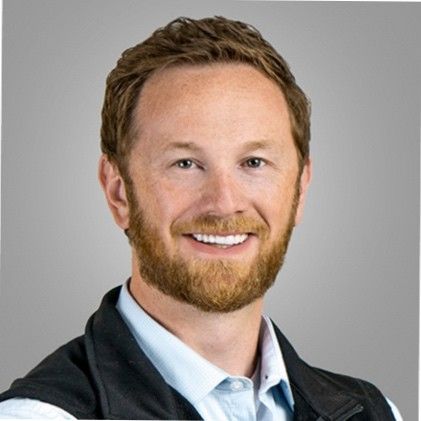
How can healthcare practices and medical sales representatives use social media for business growth? Tune in to this episode of The Medical Sales Podcast with your host, Samuel Gbadebo, to learn more. Today’s guest, Justin Knott runs a marketing agency that focuses on helping surgical groups promote their practice and services to gain a wider market reach. He discusses who his services have helped his clients engage with potential clients and how it has allowed them to achieve business growth. Justin also talks about the specific services they offer to physicians, surgeons, and other healthcare practitioners.
—
Watch the episode here
Listen to the podcast here
Sales Reps, Surgeons, And Social Media With Justin Knott
We have a guest with us. He goes by the name of Justin Knott. What’s great about this interview is that we go into the value of social media, which you guys all know, I love to talk about, but we go into what it looks like when surgical groups try to use it, what it can look like when medical sales reps try to use it, what it can look like when providers as a whole.
All the different types of providers utilize these social media platforms to stay connected, share information, get access to attract patients, or for example, in the medical sales rep’s case, get access to the actual providers. We get into the meat of how it’s all working, what the restrictions are, and where it’s headed.
You’re going to get a lot of pros in this interview. If you’re someone that wants to get into the industry and there’s something for you to learn, if you’re someone that’s already in, there are things for you to learn, even if you’re a provider, you want to tune in. As always, we do our best to bring you guests that bring you different innovations, disrupt the status quo, and do things a little differently in the medical sales space. Thank you for reading this blog.
—
Justin, how are you doing?
I’m good. Thanks for having me.
I’m excited to have you on this show because you do something a lot, like what we do in the social media space, on the LinkedIn platform, and in the medical sales space. Before I spoil what you do, I’ll go ahead and let you introduce who you are and what you do. Why don’t you go ahead?
Everything that we do is focused on how we improve their brand positioning and their rankings, whether it’s using SEO or paid advertising around each of their brick-and-mortar locations to drive more patients through the door for whatever it is that they want to do more of. We’ve been fortunate. We’ve been doing it for several years, and through that, what we’re going to talk about now.
My wife, who owns the agency, and I have spent years focusing on content development at scale, specifically on LinkedIn, which is the rarity in terms of seeing such tremendous growth right now, especially with businesses. In doing that, how do we position ourselves in front of decision-makers for practices to close more business for ourselves? We’ve spent 8 to 10 years in 2022 trying to as best we can perfect the art of content development, content aggregation, and evergreen content at scale.
To take everything you said and dial it down to one sentence, you guys work on getting in front of physicians to help them reach patients through social media.
Exactly.
Your focus is also on utilizing social media to get access to those potential customers and incentivize them to get trained on how to reach these patients.
One of the biggest things, especially starting out and our origin story of being 25, was being young and having social media as one of the few advantages in our corner versus a lot of the gray-haired healthcare-focused agencies that had been around for several years. They were a household name. They’d been doing trade shows forever. The CEO could walk into a trade show floor and start shaking the hands of the physicians or the admins. We did not have that going for us. We needed to figure out what was another way that we could gain exposure and visibility that would set us apart.
At that time, and even still now, if you look at it, there aren’t any healthcare agencies that have invested at the scale that we have in marketing on social media to get in front of physicians because a lot of people say, “Physicians are not engaged. They’re not active. They’re not proactive on social. That’s not the case, and it’s changing every month.”
I do think, within the next several years, we’re going to see a flood of physicians on the platform. It’s going to be much more of the main thing. Let’s talk a little bit about what it’s like to incentivize these physicians to want to reach out to patients. When you get in touch with one, through all your guy’s marketing, what’s the reception? Are most physicians saying, “I’ve been seeing it too and I want to be a part of this?” Is there a learning curve that you have to invite them into before they can adopt, wanting to do something like this? Talk to us a little bit about that.
The landscape, fortunately, has changed a lot in terms of the perception of digital marketing, especially in referral-dominated spaces historically, like orthopedics, neurosurgery, and those types of things are why. If I’m a gray-haired surgeon that’s been on the board for several years and I’m booked out for six months, why would I invest in digital marketing?
[bctt tweet=”If LinkedIn is going to be a primary focus or medium, everything you build needs to be predicated on how that algorithm works.” via=”no”]
What occurred dramatically and immediately with COVID closing the doors of a lot of these practices overnight, especially if you’re a deemed elective, reshifted everybody’s thought process on how do I create a direct dialogue with patients that’s not reliant on my referrals. That was a huge step forward in getting people to finally listen to what we had been warning them about. If you wait too long, it may be too late, especially with the verticalization of health care systems and large private practices going the MSO model, buying up other practices, and becoming huge. They have weighed against insurance.
If you’re the 3 to 5 physician group down the road that has ignored digital marketing, and all of a sudden, your referral sources dry up, what do you do now? It may be too late to try to catch up. It did a lot of the work for us. We had people coming to us and were like, “I got to figure this out. Can you help me?”
Do you guys go into a provider’s platform and do it for them, or do you teach them how to do it, and they do it for themselves? How does it work?
I’d say on the technical side, that’s where we come in for strategy development, practice growth, paid advertising and SEO. Those things I would not advise a practice or to try to do themselves, but when it comes to content development, that’s where collaboration is the name of the game. We want to empower physicians to get involved, get on camera, and connect with patients.
For a long time, historically, that had been a difficult and expensive thing to pull off. You got to go to their practice and set up a YouTube studio. You got to teach them the process. You got to create comfortability. We set out to build some tools to make it more frictionless. We have a video content creation tool that you click a button and record a 92-second video. It wraps it, adds music, adds a call to action, and uploads it to YouTube because we struggled to get physicians to buy into what needs to be done to create success on organic social.
To answer your question, we want to teach and empower them in the ideal scenario. Even a large organization has somebody in-house that is herding cats because that’s what it’s like hurting multiple physicians in a group. They back them down and give them the FAQs, content calendar, and guidance to start talking on camera. Once they get over that hurdle and start, everything seems to fall into place after that.
One thing I want to address is while you guys are doing that, let’s talk a little bit about the actual patients on the platform because you’re helping these providers, these practices reach patients on the LinkedIn platform. I don’t know how many people think about the LinkedIn platform as being a place to find patients, but it is. Talk to us a little bit about what that experience has been like and what you guys have seen as far as different types of patients are concerned.
I think, like a lot of the other platforms, and where people struggle and fall short is something that we’ve done well is you’ve got to decide on what your message is, what your medium is and what platform you’re going to share it on. Everything needs to be designed and built around that. Many people spend too much time to be a master of all like, be huge on Facebook, Instagram, LinkedIn, or YouTube. Except for the rare few that have celebrity-level status because of brand exposure. It’s nearly impossible to do that. You’ve got to take a step back.
If LinkedIn is going to be the main focus medium, everything you build needs to be predicated on how that algorithm works, the ratios of the posts, the timings of the posts, the links of the videos on that platform, all of it. That’s important to decide. If you’re going on LinkedIn, this is what works best. It’s shorter videos. It’s interaction in the comments. You can drive a lot of the engagement and connection stuff.
That’s what we’ve seen. That’s important to understand first and foremost. Probably on the other side is like any of the other platforms. When you’re trying to engage with patients in particular versus your colleagues, you’re trying to show your care process, the outcomes of that care process, and relatability to the patient. One of the more intimate relationships that you can have in the world is going in, seeing a physician, diagnosing you, and putting a care plan together.
If you can use LinkedIn as a conduit to position yourself as an authority in your sub-specialty, as well as paint yourself as personable, approachable, and start to know, like, and trust relationship building on the front end, it’s going to go a long way. Local is great, but if you’re looking nationally, like, “I want to be the shoulder surgeon in the country for people that are dealing with X, Y, or Z,” that’s where everything expands out infinitely because you get focused and targeted. You can connect with patients and bring a lot of patients that are willing to travel a long way to see you.
The majority of our audience is in the medical sales space. They’re, like your target audience, our surgeons or providers that have practices that want to reach out. A lot of our audience are people that want to get into medical sales, or they want to do more within their own territories and reach their providers.

I want you to speak to this. We’ve seen that LinkedIn has become a place for surgeons and different types of providers to share information. They’re spreading knowledge amongst each other and almost creating thought leaders on the LinkedIn platform. Whether that’s necessarily translated to what it is outside of LinkedIn, they’ve become relatively loud voices on the LinkedIn platform, which has created an opportunity for the medical sales space, AKA representatives, to get access to them.
Having patients on the platform, as far as these people are concerned, it’s not often thought about. You talked about seeing a lot of patients there. What do you see as far as surgeons wanting to share information versus surgeons wanting to reach more patients? Is it one and the same? Is it different types of customers? Talk to us a little bit about that.
The physicians that are engaged are still a lot more focused on colleague collaboration and advancements in their space. If you look and you see a lot of what’s shared, it’s about new surgical techniques, new devices that they’re using, and cross-collaboration with other sub-specialists in their space around the country because of the nature of the beast of what LinkedIn is, and that’s there in this world.
You do have some that are using it as a patient acquisition. To the benefit of med device reps, the ones that are engaged on there are looking to be engaged in a business manner and share the type of content that’s going to push their subspecialty forward, which is great for med device people. That’s what you want to be engaging about. If it was a platform like Instagram, where it’s aesthetics people trying to get new patients for their new laser, it’s hard to use that as a reach-out tool to drum up sales as a med device. The well is deep on LinkedIn and evergrowing, especially in the physician space.
Going back to the reps, do you think that reps can position their services and products so that patients are pushing providers to pay more attention on the LinkedIn platform?
In a roundabout way, you could, through momentum, thought leadership, and getting physicians to pay attention. Where the real advantage lies is to be able to go straight to the source and to build value, relationships, and connections in a real and organic way directly with the physicians on the platform versus going through the patient as your pioneer.
It’s like the pharmaceutical industry does by advertising a pharmaceutical drug. They’re trying to get the patient to walk in and talk to their doctor about it. When you manage LinkedIn, you can go direct to the source of the physicians that are engaged on the platform and start creating value for them through content as a medium.
You brought something up that I want to ask you about. You brought up pharmaceuticals. In all this discussion we’ve had so far, we’ve focused on medical device sales, AKA surgeons, but what about the other specialties like pharmaceuticals, diagnostic, and all these different realms of medical sales? What have you seen on the LinkedIn platform as far as reaching those types of providers?
I’ve seen it work tremendously well in a lot of different use cases. We even had an organization that does vestibular rehabilitation. They do a lot of training and certification. They’re well known for that, but they had developed an out-of-the-box franchise model, where in 225 square feet, you could put some vestibular equipment and a trained MA in place. If you’re an ENT, a neurologist, or an audiologist, it’s turning these vestibular patients away because you don’t have the ability to treat them. It’s a whole loss revenue area in practice.
We went out and were able to put a strong social selling in the content development process in place, and in six months, they closed almost $2.5 million in sales, and it was all through selling the ENTs and neurologists. It can be done across the board for a lot of different stuff. If you hone in your message, you make it organic, you know who you’re positioning, and you use something like a sales navigator to your advantage, you can connect with anybody that you want to on the platform, for sure.
Let’s change gears a little bit. We’ve talked about providers getting access to patients. We’ve talked about med sales reps getting access to providers. What about the med sales reps that want to enhance their careers, be more visible to people within their own organization, or maybe turn it into an opportunity for a different organization? What do you have to say around what they can do on the LinkedIn platform?
I firmly believe and have for a long time that this is one of the most missed and under-utilized things that’s going on in this space. That’s why I love what you all are doing. Historically, med device companies have done an incredible job in onboarding training, empowering, and continuing education for med device reps on everything except social selling. It’s to their advantage to make them good at social selling because they become the brand ambassadors and multiple forget all the stuff that a good organization should be doing on social.
[bctt tweet=”If you start there and start with consistency, you can control your destiny.” via=”no”]
It’s left the med device rep to work with people like you because they got to figure it out on their own. They’re like, “How do I own a platform because Medtronic or whoever it is, is not teaching me how to do it? They always leave me scratching my head. Why not?” It presents a huge opportunity for med device reps because it is in its infancy still to carve out a powerful platform and thought leadership development to grow their own. Not only in sales and their own portfolio but build their resume and leveraging that into something a whole lot bigger and better.
It’s called the 80/20 rule, but I think it’s the 90/10 rule. It is developing awesome consistent content that’s focused on one goal, and it’s not focused on generating sales. It’s focused on value adding to your audience, and that’s doing whatever you can to help educate them on how they can improve patient outcomes or what’s working in the field, whatever that is. If you start there and start with consistency, you can control your destiny. It’ll probably take some time, 1 to 2 years, to gain tremendous momentum, but it puts you in the driver’s seat of your career if you build an audience like that.
You mentioned something that I want to ask you about. You said it takes time. Going from complete obscurity on the LinkedIn platform to relative visibility, not rockstar status with 40,000 followers.
We’re getting value out of the platform.
How long would you say it takes?
I’d say eighteen-ish months on average. It could be less. It could be more like 12 months or 2 years. It was a 12 to 18-month journey for us to perfect content consistency, content development at scale, finding our groove and what that looks like, and tweaking, perfecting, and refining. That’s always an ongoing battle. The hardest part is learning how to get in front of it, how to create it consistently, how to not work yourself to the bone, and how to create enough content to be relevant. Probably 12 to 18 months of focused effort to start on the LinkedIn platform.
We’ve worked with clients who were active. I’m not going to say they were complete obscurity, but they had 700 or 600 followers, and they had very little content put out there. It’s maybe a couple of re-shares. We’ve consistently seen 0 to 6 months to go from no one having any idea what you do or who you are to at least your target audience is aware that you exist. They were engaging with you.
The advantage of working with somebody like yourself is you don’t have to figure out what the content development process needs to look like, and it took us a long time. Even after we had moved into a good position on LinkedIn, like even starting our podcast, for instance, it took me six months to figure out how to get under a week in post-production time and schedule it. It takes a long time if you’re doing it on your own.
That’s the advantage of bringing somebody in who’s already figured out the mousetrap and can guide you to creating the right content, developing your message, and connecting with people consistently, especially with everything that’s changed and evolved over the last several years in the LinkedIn algorithm.
I told you before that we also have people that want to get into the industry reading this blog. We work with clients to help them get some visibility to potentially get reached out for an interview or potentially be seen by a hiring manager. What do you say to that? I want you to think of it from this perspective. Think of it as someone that has never been in medicine. They might not even have sales experience. They’re maybe a customer service employee. They’ve been working 3 or 4 years somewhere in there saying, “I want to get into the medical sales space.” What would you advise them on getting more visibility, coming off authentic, and potentially being seen by someone that is a decision maker?
First, I would spend some time and effort. You need to invest a good amount of time in getting your profile squared away. It’s got to look strong, and you’ve got to check all the boxes on there. Make sure that’s good. Being thoughtful in terms of the value set that you do have if it’s a customer service rep or whatever it is. That means you probably have strong communication skills.
Use some of those things to your advantage. You may not be able to talk as an expert to that specific type of device or what you want to do. Using the skill sets that you do have to your advantage to create good content because it matters less about the message and more about, you’re showing that you have the ability to develop strategy and execute in terms of building an audience on LinkedIn.

The other side, and it’s what we did to find success, especially when we were trying to figure out what the whole thing looks like, is seek out mentors on the platform that are having success, med device reps that have invested in content. Listen to their origin story, and heed their advice in terms of how they got to where they are. That will go a long way because it will help you build your network and potentially give you a leg up from a reference standpoint if you develop a strong relationship.
Most people are willing to share how they’ve come to success on LinkedIn. If I’m a customer service rep, I’ve read on my profile, building some content, and I want to land a med device job, I would start finding people that are having success on LinkedIn and start engaging them with a conversation like, how do I get to where you’re at? How do I get my first job? That’s what I would encourage. Ninety percent of people are willing to take at least fifteen minutes of their day and share some advice. People ignore and skip over way too often.
Going after your target audience with providers, what would you say the biggest challenges have been? It could be anything. From the challenges with getting them to see why it’s valuable to the challenges of what you see providers consistently stumbling with when they’re trying to make it happen. What challenges do you guys see?
On the outreach front, in terms of connecting and turning that conversation into saying something offline that generates sales, and it’s what everybody has been struggling with before the rise of social media is physicians get hammered more than anybody else. They have more noise around them than probably anybody else because of the amount of income that is generated by most surgeons. It’s hard to differentiate yourself and cut through the noise to get them to be willing to listen.
You’re saying something different, and you’re not there to abuse their time because that’s their most valuable asset. That’s probably the biggest uphill battle like any other medium. If you’re a med device rep trying to cold turkey, walk into an office, get past the gatekeeper and engage in a conversation with a physician. They probably had 30 other people do that in that week alone.
Knocking on their virtual door to speak on LinkedIn is how do you walk, crawl, and run in terms of developing your relationship that’s one-to-one with physicians on the platform that are willing to listen? It’s harder early on, and once you get to the position that my wife has gotten, it’s the sheer magnitude of your influence. It makes it a little bit easier from an outreach perspective. I’ve got something important to say. There are a lot of people reading. Eventually, that’s the goal to get to, but early on, it is being vulnerable and personable. Physicians are people too. Not going straight to the sale and focusing on building content and the sales will come as a result.
How long have you guys been on the LinkedIn platform?
Ten-ish years or so in 2022 that we’ve been on it. It’s been several years of journey in terms of turning our sites and saying, “How are we going to use LinkedIn to be a springboard to grow our business?”
You’ve been there when LinkedIn was LinkedIn and when LinkedIn became Microsoft LinkedIn. You’ve seen the features where we could do stories and features removed where we can no longer do stories. You’ve seen things come and go. How do you stay in front of all those changes that affect how the algorithm works? What keeps you guys going steady and growing clients steadily in light of all of these changes that are happening all the time?
One of the biggest shifts we’ve seen, especially in thought leadership development, has been probably the most recent downshift LinkedIn has done in connection request development. Going from being able to send 1,000 a week to 50 a week is a cataclysmic shift, especially when you’re trying to build huge audiences at scale and use that to create direct message outreach sequences and all of that stuff. That’s a huge shift.
You got to stay up on it, but you got to also continue to use automation and technology to your advantage because there’s technology out there that stays up with the times. If you’re smart enough to invest some time and resources into learning the cause and effect of whatever it’s come out on LinkedIn and how you can use automation to your advantage to still stay on top of it without killing yourself, that’s probably been the biggest thing for us.
These things are constantly evolving on the platform, but there are still a ton of tools out there like PhantomBuster and those types of things that can do a tremendous amount of stuff for you without getting you into trouble. It is leveraging technology to your advantage and being willing to move, especially if you look at it purely from a sales standpoint. You’ve got to have all your chips in one basket on LinkedIn because they will continue monetizing that platform like Facebook did. Things are going to continue to change.
[bctt tweet=”The most rewarding thing is seeing the company culture take shape and love what they do.” via=”no”]
With that, you have to understand that means the cold email will need to come into the equation. Facebook group outreach, when you become equation. You have to have a multi-pronged approach because LinkedIn is going to throttle everything down and move more focused on their ads platform. It’s going to happen over time. There’s no way around it.
I love what you guys are doing. You guys are a power couple that has some new life you brought into the world. You’ve been able to run this great organization that’s doing amazing things. Give us a little bit about what keeps you guys focused. Why are you guys passionate about this? What helps you on a daily basis stick to the plan and execution? What helps you make that happen?
It’s been an evolving journey now, having a one-and-a-half-year-old. Kelly and I being, in terms of the business, for so long, and her taking a step back. She had hyperemesis during her pregnancy. That was tough on her. She spent a lot of time throwing up, which made it difficult to work. That was a tough journey to watch her go from running the business day-to-day with me to physically not being able to do it, making a decision to step back and do one of the most difficult jobs on the planet. That’s being a mom and raising a little one, which I have tremendous respect for her in what she’s been able to do.
For us, it’s motivating after all the time and effort to put in to be able to have some somewhat of a lifestyle business. I do get to spend a lot more time with my daughter. I get to get up with her every single morning and keep her in the mornings. I get to clock out a little bit earlier than most people. It’s created a lifestyle business for us that allows her and I to spend a lot more time with our daughter, which keeps our cup filled and motivated on the work side too.
It’s been a journey for Kelly. It’s a tough market for finding good staff across the board, and that goes for nannies as well. It’s been a struggle of a journey because she’s been ready to get back and we haven’t been able to find the right person to get her back at some level. Probably the other big motivator as we’ve continued to grow is the building of the company culture and investing, as our roles have shifted from execution to manager, and we’ve grown more employees in our organization.
One of the most rewarding things for me is seeing company culture take shape and seeing they love what they do, especially if they’ve left a rough situation and come into a situation with ours. The most rewarding thing for me over the last year is getting people on board and seeing them start to work on their own, build their departments on their own, and all of that stuff. That’s been exciting.
Justin, I’m going to ask you a few questions, and you will give me the best answers. You have about five seconds to answer even the best answers that come to mind. Are you ready?
Yes.
The best book you’ve read in the last several months.
You are the second person that’s brought this book up, and I keep hearing about it. Best movie in the last several months.
There haven’t been a lot of good ones that have come out. Let me think about that for a second.

Best meal you’ve had in the last several months.
I can’t remember the name of the restaurant at the top of my head, but it’s the son of the Jiro Dreams of Sushi guy. The Netflix documentary guy’s son started in an Osaka restaurant in Manhattan. My wife and I went for our anniversary where it’s like him and ten people. He’s doing it all by hand. That was one of the more remarkable meals of my whole entire life.
I’m going. You sold me on that one. The last one is the best experience you’ve had in the last several months.
Going to Sedona, Arizona, was an awe-inspiring experience that came with the Grand Canyon while we were there. Going with my wife, my daughter, and my in-laws and getting to spend 5 or 6 days between the Grand Canyon and seeing Sedona was an experience I will never forget.
Justin, it was great having you on the show. We love what you’re doing out there. I’m happy to even be sharing this space with you and your company. Thank you for being on the show.
Thank you for having me.
—
That was Justin Knott doing some cool things out there. As we discussed, social media has become such an important part of the business. It’s even entered healthcare. Healthcare is starting to pay attention and utilize it, and you can too. Maybe you’re someone reading this blog, and you’re thinking to yourself, “I want to get into medical sales. I don’t know if I want to be a pharmaceutical sales rep, a medical device sales rep, a diagnostic sales rep, or a dental sales rep.”
If you’ve been hearing all sorts of things and you know you want to work in healthcare, and you want to sell in healthcare, but you’re not sure where to go, then you need to visit, EvolveYourSuccess.com. Select Attain Medical Sales Role, schedule some time with us, and let us help you get you on the right track and get you into a position.
If you’re someone that knows exactly where you want to go, but you’re not getting those interviews, or you’re not getting past the 2nd and 3rd round in those interviews, visit EvolveYourSuccess.com select Attain Medical Sales Role, fill out the information and submit it and schedule some time with us.
For those of you that are medical sales reps and you’re on the road right now, when you’re reading this blog, you are thinking to yourself, “The year is coming to a close. I wonder if there’s more I can do to improve my ranking, potentially get to the winner’s circle or president’s club, or hit that goal attainment that I’ve always dreamed about?” dream no more.
Go to EvolveYourSuccess.com and select Improve Sales Performance, click on the Medical Sales Builder Program and let’s have a conversation so we can help you get to where you want to be. There is still time. One thing that we know in this industry, regardless of which one you’re in, yes, there are many fields with long sales cycles, but a lot can happen relatively quickly if you get up, do the right things, and execute every single day. As always, keep coming back, read more episodes, and tune in next time for another episode.
Important Links
- Justin Knott – LinkedIn
- PhantomBuster
- Crossing the Chasm
- Attain Medical Sales Role
- Improve Sales Performance
- Medical Sales Builder Program
About Justin Knott
 I help physicians and medical practices tell their stories, promote their procedures and specialties, and engage with existing and potential patients to drive new business and growth. As the President & CEO of Intrepy Healthcare Marketing, I aid doctors and surgeons in creating a connection with their patients and communicating key differentiators through healthcare marketing strategy development.
I help physicians and medical practices tell their stories, promote their procedures and specialties, and engage with existing and potential patients to drive new business and growth. As the President & CEO of Intrepy Healthcare Marketing, I aid doctors and surgeons in creating a connection with their patients and communicating key differentiators through healthcare marketing strategy development.
I am a speaker, podcaster and content creator. I specialize in medical marketing strategy development and execution including medical SEO, paid ads for doctors, healthcare content development, reputation management and CRM marketing automation. I have specific expertise in marketing strategy consulting for SMEs in healthcare.
At work, my main focus is on creating impactful content and growing practices, but outside of that, I am hanging with my wife and daughter, staying active, and playing with my two dogs.
Love the show? Subscribe, rate, review, and share!
Join the Medical Sales Podcast Community today:































